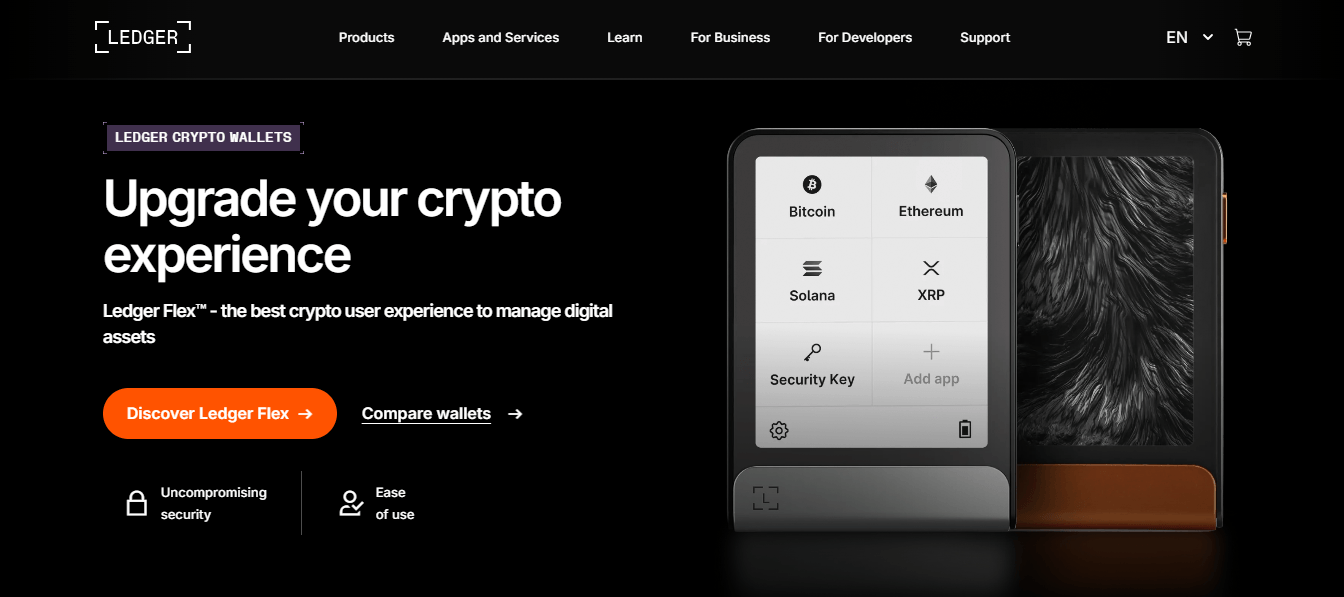

Getting started with Ledger Live
Ledger Live is more than just a crypto wallet interface
Ledger Live: How [Keyword] Helps Bridge Centralized and Decentralized Finance
Ledger Live is more than just a crypto wallet interface — it’s a control center for securely managing digital assets while navigating the space between centralized and decentralized finance. For many individuals and businesses, this is where [Keyword] becomes a key enabler, acting as the connective tissue that allows users to operate comfortably in both worlds without sacrificing security or flexibility.
When you first install Ledger Live, the app immediately orients you toward self-custody. All private keys remain locked inside your Ledger hardware wallet, whether you’re holding Bitcoin, interacting with DeFi protocols, or using custodial services linked to centralized platforms. This is an essential first step in bridging the gap between CeFi and DeFi, because it ensures your control over assets even when you move them into different financial ecosystems. [Keyword] fits into this equation as the strategic tool or service that helps facilitate movement between these domains, making transitions smooth without creating unnecessary exposure.
On the centralized side, Ledger Live integrates with payment processors, exchanges, and staking providers that operate within regulated environments. This means you can, for example, purchase cryptocurrency through a partner exchange directly inside Ledger Live, then immediately store it on your hardware wallet without leaving the app’s secure environment. This avoids the vulnerabilities of leaving funds on an exchange while still enjoying the convenience and liquidity centralized platforms offer. Here, [Keyword] can streamline the process — perhaps by providing better transaction routing, aggregation of exchange rates, or compliance-ready transaction records.
On the decentralized side, Ledger Live offers built-in support for interacting with Web3 applications, decentralized exchanges, and staking protocols. By connecting your Ledger device, you can approve smart contract interactions with full hardware security, ensuring that even complex DeFi transactions — such as yield farming, liquidity provision, or governance voting — are protected from malicious code. [Keyword] strengthens this bridge by making the experience less fragmented, perhaps by aggregating DeFi opportunities or simplifying the process of moving assets between chains.
One of the most significant challenges in bridging CeFi and DeFi is the difference in user expectations. Centralized services often prioritize ease of use and customer support, while decentralized systems emphasize transparency and trustlessness, sometimes at the cost of simplicity. Ledger Live works to unify these expectations by presenting a consistent, user-friendly interface backed by hardware security. [Keyword] can enhance this by acting as a facilitator — whether that’s through advanced analytics that help users choose between centralized and decentralized yield opportunities, automated transaction batching to save on fees, or integrated risk scoring to assess the safety of DeFi protocols before engagement.
Security is at the heart of the bridging process. Centralized exchanges require trust in the service provider, while DeFi requires trust in the code and the blockchain’s consensus. Ledger Live, with its hardware wallet integration, minimizes the trust you must place in any third party by ensuring all signing happens on your device. Even if you’re connecting to a centralized platform to cash out or to a decentralized protocol to stake, the transaction cannot proceed without your explicit, physical confirmation. In this way, [Keyword] complements Ledger Live by potentially adding further verification layers — such as multisignature workflows for business accounts or compliance checks for regulated entities.
Another key aspect of bridging CeFi and DeFi is interoperability. Assets may need to move between blockchains or be wrapped to function in different environments. Ledger Live supports multiple blockchains natively, and through integrations with third-party dApps, it can connect to bridging protocols that allow assets to flow between ecosystems. [Keyword] could enhance this functionality by optimizing the bridging process — perhaps automating the best route for transferring value, reducing costs, or providing cross-chain compatibility insights so users avoid unnecessary steps.
From a financial strategy standpoint, this bridging capability means you can diversify across both centralized and decentralized products without losing operational control. For example, a user might hold stablecoins earned from DeFi yield farming in their Ledger Live wallet, then transfer a portion to a centralized exchange to convert to fiat for expenses. Conversely, they might buy ETH on a centralized exchange, then quickly route it into a DeFi staking contract via Ledger Live’s Web3 integrations. In both cases, [Keyword] can act as the transaction layer that ensures these movements are efficient, transparent, and secure.
The real power of combining Ledger Live and [Keyword] lies in giving users the ability to leverage the strengths of both financial worlds without becoming overly dependent on either. Centralized platforms offer liquidity, fiat access, and often simpler user experiences; decentralized platforms offer censorship resistance, composability, and potentially higher yields. By operating at the intersection, Ledger Live allows you to manage assets across this spectrum with confidence, and [Keyword] helps make the journey between these points seamless.
In the broader context of financial innovation, this bridge is critical. As more traditional institutions begin interacting with blockchain-based systems, the need for secure, user-controlled interfaces that can interact with both centralized infrastructure and decentralized protocols will grow. Ledger Live is already positioned as a leader in this space, and [Keyword] can serve as a catalyst, accelerating adoption and making hybrid financial strategies accessible to both experienced crypto users and newcomers.
Ultimately, the combination of Ledger Live and [Keyword] represents a model for the future of finance — one where individuals and businesses can fluidly navigate between the structure of centralized services and the freedom of decentralized ecosystems, without ever giving up the security and sovereignty that define true ownership in the digital age.